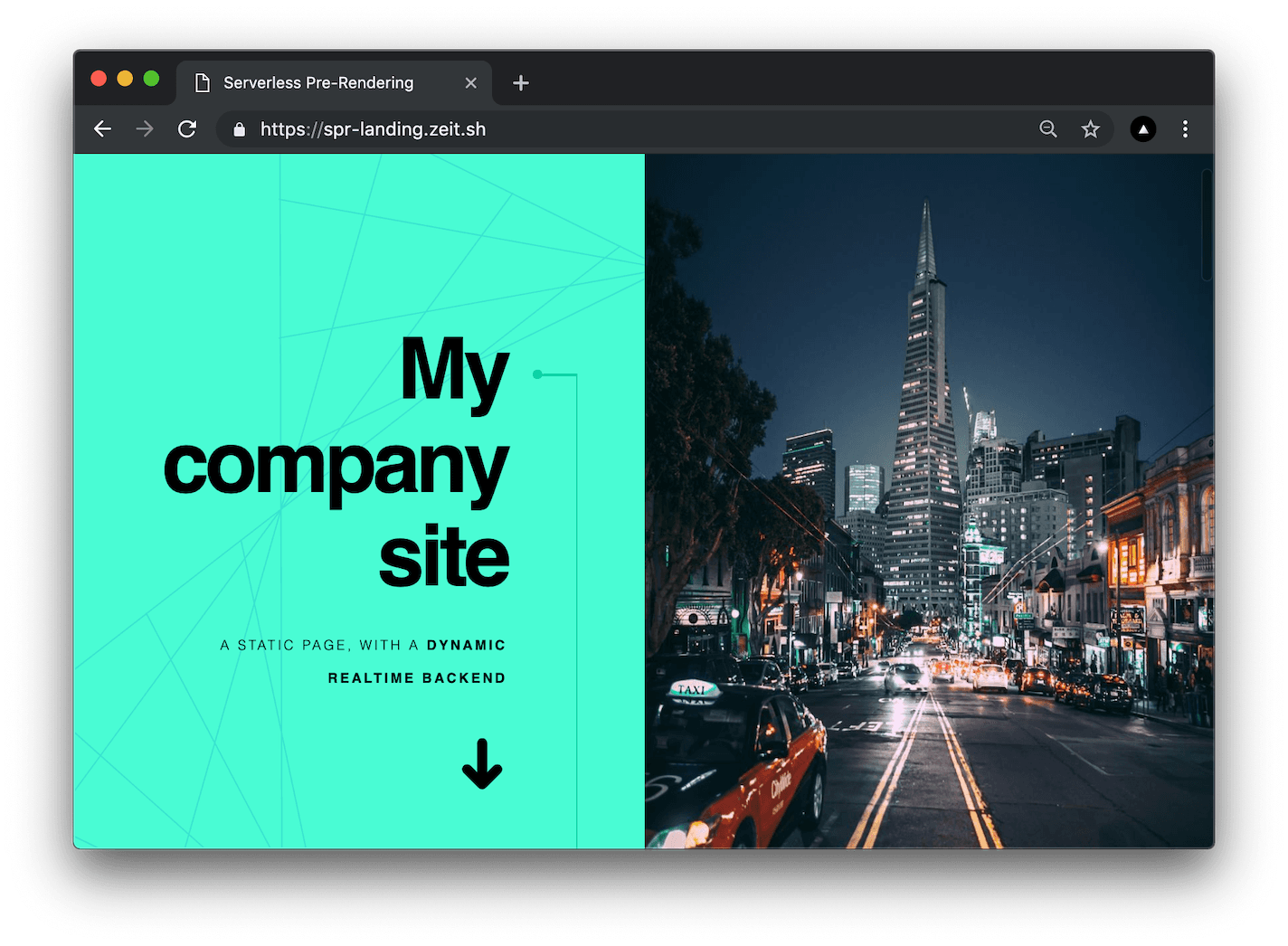3 min read
Static websites are fast. When you deploy static frontends to Vercel, we automatically serve them from every edge of our global Smart CDN network.
But static websites are also... static. Static site generators create all your pages during the build process — all of them, all at once. Ever had to quickly fix a typo in a page, only to wait minutes or hours for your change to go live?
Today, we are introducing Serverless Pre-Rendering, an industry-defining feature of our Smart CDN network that allows you to get the best of both worlds: the speed and reliability of static, and the versatility of dynamic data rendering.
Link to headingHow it works
Let's start with a demo. You’ve built a landing page. You used React, Next.js, CSS-in-JS (or your favorite modern frontend stack). All of which you pushed to GitHub or GitLab for it to be automatically deployed.

Let's say we want to edit the title of the page. At this point you have two choices:
Send a PR, wait for the build to complete, merge, go live. This is great for code changes, but is it best for copy? Builds can take a few minutes at best, to hours! We can do better.
Use a Headless CMS for its friendly interface to edit content, and query it from the frontend. You could use Contentful, Prismic, Contentstack, Sanity, Tipe, Hygraph, ButterCMS, DatoCMS — virtually any API that can return dynamic data.
We don’t want to wait, so for this demo we wanted to edit the data in real-time. For the task, we picked our favorite document editing tool, Notion, and queried its API from Next.js.

Towards the end of the video, we measure the performance of this dynamic page. The response is instant, from our CDN edge. Using Serverless Pre-rendering, you can provide an instant experience even with dynamic content.
How does that work?
When an end-user accesses your website, we always serve a static version.
A Serverless Function computes a new copy querying dynamic APIs in the background.
No matter how much traffic you are serving, only one background invocation is made at an interval you decide.
What this means for you:
No more hard decisions between static and dynamic. SPR marries both paradigms.
If your backend is slow, your responses are still always fast.
Your backend functions and datasources can go down, and you will likely tolerate their downtime.
Traffic to your backend is minimized, which results in massive cost reductions.
As we’ll see next, the best part is that this integrates easily into your existing codebase, and takes advantage of a HTTP standard proposal.
Link to headingCache-Control: stale-while-revalidate
The demo above is a simple Next.js app deployed to our platform and available on GitHub. All the above benefits and functionality are unlocked by a single line of code.
res.setHeader('Cache-Control', 's-maxage=1, stale-while-revalidate');Composition of a header that includes stale-while-revalidate.
Let’s break it down.
Cache-Control— This header tells our edge proxy how to cache the result of the React page being rendereds-maxage=1— This flag tells us that our Edge (but not your end user) should cache it for one secondstale-while-revalidate— This indicates that we should serve a stale version, while a revalidation happens asynchronously
In short, you can begin adding this header to any of your Vercel deployments, using whatever technology you like (Next.js, Gatsby, Node.js, Go, Rust...), without any rewrites or lock-in.
Link to headingUse-cases
Serverless Pre-Rendering (SPR) is a suitable technique for anytime you want to serve fast pages, from anywhere in the world, that are produced by dynamic datasources and computation.
Here are some popular use-cases:
Marketing pages. Pages explaining a new product or service
E-commerce websites. Containing lots of items, categories, user reviews, etc.
Blogs and Newspapers. Where multiple users edit stories in realtime, including breaking news
High-traffic APIs. Where computation is debounced in order to minimize load
Public dashboards. Where lots of dynamic content is consumed by many users
Link to headingGetting Started
The example showcased above is fully open-source and available under the MIT License. Deploy to Vercel and update the PAGE_ID environment variable with your page ID – that's all it takes!
Support for SPR is generally available in production, deployed across our entire network.
What API or Headless CMS would you like us to feature next? Let us know your feedback!